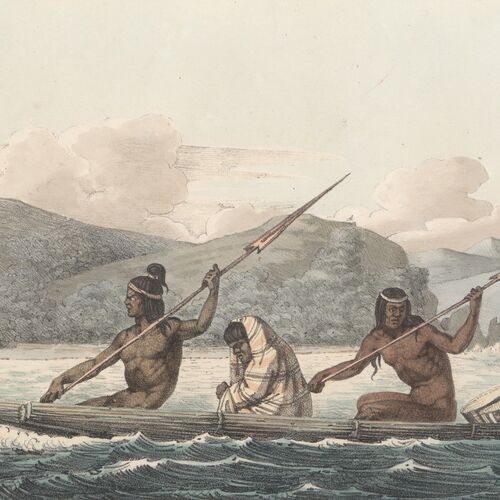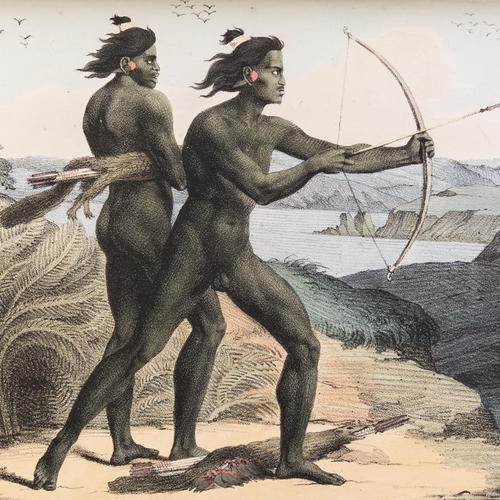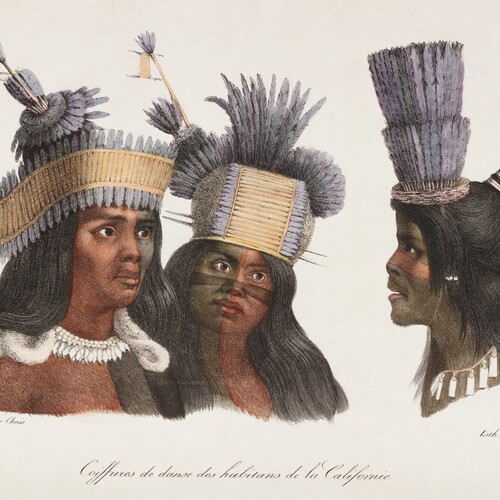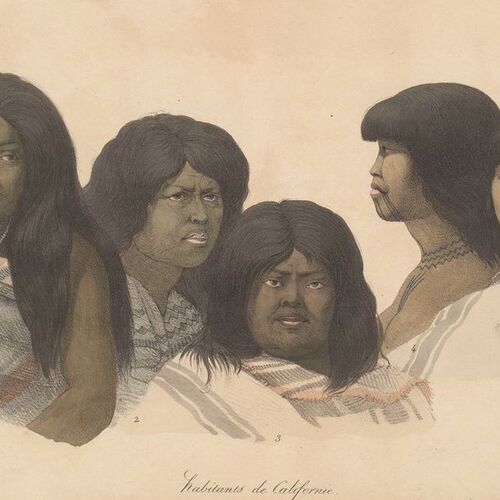A Brief History of the Ohlone People
Labels and Anthropology
A discussion on the history of the Ohlone people living in the area where the Santa Clara Mission community was founded cannot be complete without an understanding of where the commonly used term “Ohlone” comes from and how it often fails to acknowledge the socially, culturally and linguistically complex group of people that resided in the area prior to colonization.
Paintings by German-Russian painter and explorer Louis Chorin depicting the Ohlone people, their lifestyle and culture. (click individual images for full painting view)
Anthropology—the study of cultures, societies, and linguistics—has historically been used to label groups of people in ways that make managing or controlling them easier. Evidence of the problems created by anthropology's inherently imperialistic nature can be found in the way people native to the area have historically been labeled (Field 81).
When the Spaniards first colonized coastal California in 1769, they labeled the people who were native to the area costehos (coast-dwellers), under the assumption that the individuals there were all part of a homogeneous ethnic group (Bean 301). For more than two centuries, anthropologists would use different labels from Costanoans to Ohlone with the same purpose of categorizing the Native Americans who lived in the San Francisco Bay Area region as one collective people.
However, recent linguistic research suggests that the Natives who resided here in pre-colonial times were far from a homogenous group. Originally, the languages spoken by the Native People were considered to be singular, with various tribes speaking different dialects (8 in total). Now, many anthropologists have updated their stance, concluding that these dialects are not similar enough to be considered the same language (Levy 57).
Naturally following this new stance came the conclusion that the Ohlone people were in fact not a single people, but a label created by colonizers to uniformly discriminate against an incredibly diverse and complex population of distinct tribes.
Based on this new categorization, the people who resided in the area where the Mission Santa Clara community was founded would be more accurately identified as Tamien (also spelled Tamyen and Thamien). Representatives for the descendents of the Tamien People have also taken this stance, distinguishing themselves from other tribes including the Muwekma Ohlone Tribe.
For the sake of clarity and continuity with contemporary discourse, the term “Ohlone” will be used to describe the collection of tribes that inhabited California prior to Spanish contact and “Tamien” will be used to describe the particular tribe that lived in the area where the Mission Santa Clara Community was located, even though these labels can be problematic as explained in this segment of the exhibit.





